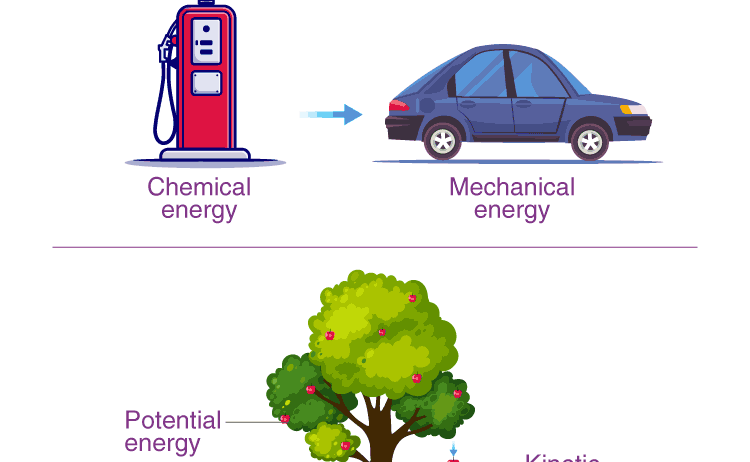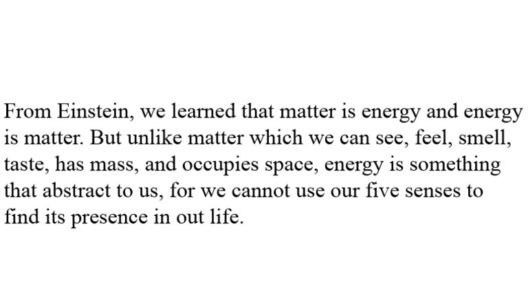The Law of Conservation of Energy is a fundamental principle that underpins various scientific disciplines, yet its implications extend beyond the confines of physics and touch upon the very essence of our survival. Much like a closed system where no energy escapes into the void, the concept evokes a profound respect for the delicate balance within ecosystems, economies, and personal lives. Breaking down its core essence will illuminate not only its scientific rigor but also the moral imperative it imposes upon society.
At its core, the Law of Conservation of Energy posits that energy cannot be created or destroyed; it can only be transformed from one form to another. This immutable law serves as a guiding beacon, akin to a compass pointing towards sustainability in an age rife with ecological crises. Visualize energy as a traveler on an endless journey: it may change vehicles—from kinetic to potential, from thermal to electrical—but it always journeys forth, never abandoning the realm of existence.
This idea is reminiscent of the water cycle, where water evaporates, condenses, and falls as precipitation, perpetually cycling through various states yet always existing on Earth. Similarly, energy flows through systems in myriad forms, each transformation characterized by its utility and impact. In this sense, the law is not merely a theoretical assertion; it is a vital blueprint for understanding and managing energy resources efficiently.
Embracing this law carries notable implications for energy management, especially in the realms of renewable resources and sustainability initiatives. One of the most pressing challenges faced today is our reliance on fossil fuels, which, in essence, represent energy stored from millions of years ago—an ancient reservoir of biological energy. As we extract and burn these fuels, we continuously release that energy into the atmosphere, transforming it into pollution and greenhouse gases. It serves as a stark reminder that while we can transform energy, we cannot escape the consequences of its mismanagement.
Furthermore, the Law of Conservation of Energy suggests that inefficiency is tantamount to waste. Consider a household that operates several appliances simultaneously, each consuming energy that dissipates as heat, sound, or light; this energy isn’t lost, but rather converted into forms that may not contribute to the household’s goals. By adopting energy-efficient practices, we can optimize these transformations, ensuring that the maximum amount of energy serves beneficial purposes—this is akin to tuning an instrument for perfect harmony.
Delving into practical applications, the implications of this law echo loudly in the discussion surrounding renewable energy sources like solar, wind, and hydroelectric power. Solar panels, for instance, capture light energy, transforming it into electrical energy. This metamorphosis does not create energy but repurposes it, harnessing the sun’s eternal radiance provided it is managed wisely. Each photovoltaic cell operates under the same law, reminding us that our planet’s energy supply is abundant if only we are willing to invest in the right technologies.
This brings to light another vital metaphor: energy is like currency in a grand economic system. Just as circulating money contributes to the vitality of an economy, engaging renewable energy expands the reach and sustainability of our energy landscape. In this narrative, fossil fuels act as short-term loans that yield immediate gratification but come with heavy long-term debts—namely, environmental degradation and climate change. In contrast, investing in renewable energy resources is akin to building an endowment that will sustain future generations.
Another area where the law manifests is in energy efficiency within industries. Consider manufacturing processes where inputs transform into products; every step along this production line must account for energy conversion. By implementing practices such as recycling energy output—using waste heat to power other processes—industrial operations can curve the trajectory of wastefulness. Thus, the essence of conservation becomes an ethical obligation, urging not only responsible action but also innovative thinking.
However, a pressing challenge remains: understanding energy’s social and environmental consequences. The transformation of energy is not merely a scientific concern but extends to spheres of equity, access, and social justice. Marginalized communities often bear the brunt of ecological mismanagement, facing disproportionate exposure to pollution emanating from traditional energy sources. As such, there is a moral imperative to consider the implications of our energy choices, ensuring that the benefits of energy transformations are equitably distributed.
In conclusion, the Law of Conservation of Energy directs us toward a greater understanding of the complexities woven into the fabric of our existence. It obliges us to recognize that energy is not merely a utility but is enmeshed within an intricate web of ecological, social, and economic systems. As we journey forward in an era defined by rapid technological advances and climate uncertainty, embracing this law as a guiding principle could lead to a more sustainable and equitable future. Energy is a baton in a relay race; how we manage its passage determines the outcome for our planet and future generations. Adhering to the tenor of conservation will not only secure our resources but also nurture the environments in which we live.








